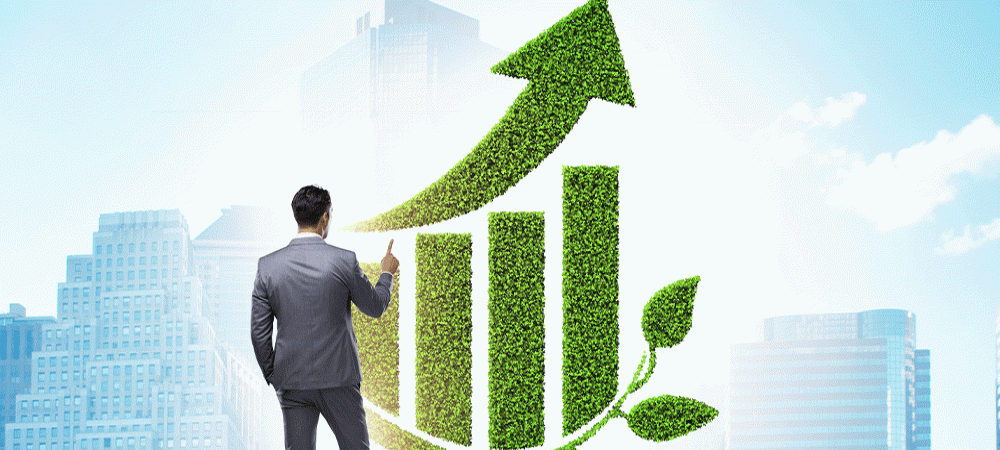The COVID-19 pandemic has brought climate change into the world’s focus more than ever before. The lockdown restrictions resulted in a 7% drop in global greenhouse gas emissions in 2020 but it is predicted that emissions would rebound in 2021. James Petter, International VP, Pure Storage, explains how enterprises should actively choose sustainability as an immediate priority, not just for a competitive advantage but also for the planet’s health.
The changes of the last year have taught us important lessons. One of the most valuable is how much we took for granted, and just how vulnerable our perceived ‘givens’ really are. Most, if not all of us, are now more cognisant of our physical and mental health and how important it is to have a strong support network to lean on.
But the pandemic also reinvigorated the debate on climate change and the impact that many of our progresses are having on the environment. According to a recent report, driven in large part by lockdowns and other COVID-19 restrictions, in 2020, we saw a 7% drop in global greenhouses gas emissions over 2020. But the same article warned that emissions would rebound by 2021.
Just how we go about building a sustainable future is perhaps one of the greatest challenges (or opportunities) of our times. Technology companies will play a huge part in any sustainable future we build. Governments and businesses alike must plan with a long-term view. We have to implement innovative solutions to ensure sustainable energy consumption without compromising on performance.
The Middle East stands at a fork in the road. Normally forks in the road present quandaries, but this one is a no-brainer: sustainability or disaster? According to PwC’s Strategy& team, if the region takes the sustainable road, it could reap US$3 trillion in economic growth and generate more than one million ‘future-proof’ jobs by 2030.
Sustainable, collaborative practices bring growth
The region, Strategy& points out, could be a world leader in planet-saving initiatives, given its potential to tap renewables for the purposes of carbon-neutral and carbon-negative products that can then be exported. Organisations across the Middle East also have more freedom, on average, than global peers to diversify their energy mixes. Solar power springs to mind.
And the region is leading already. In the Arab Gulf, national economic visions aimed at alleviating petrochemical dependence put renewable energy sources front and centre. Government urgings have driven a trend that has moved the conversation from ‘green’ and wholeheartedly embraced the concept of ‘sustainable’.
The world’s largest single-site Concentrated Solar Power (CSP) facility can be found in the United Arab Emirates (UAE). Dubai Expo 2020’s self-sufficient Sustainability Pavilion is designed to showcase solar power, smart water consumption and other vital innovations. Saudi Arabia’s Red Sea Project describes itself as ‘grounded’ in sustainability and the kingdom’s Qiddiya development will focus on Saudi Arabia Vision 2030’s ‘key tenet’ of, you guessed it, sustainability. Qatar’s Lusail Smart City follows suit, following sustainability requirements laid down in Qatar’s National Vision 2030.
The impact of digital and the role of the technology sector
Such industry and government initiatives can make a big impact in helping organisations, particularly those in the early stages of transition, overcome the challenges of making the shift towards sustainability. With support to build relevant capabilities and address the challenges of aligning sustainability goals with business strategy and objectives, businesses will be better positioned to make full use of emerging technologies to remain globally competitive and contribute to our collective green targets.
Government initiatives are vital, as very few regional enterprises have sustainability experts on staff. Collaborative effort is needed to make a sustainable future a reality.
Technology decision makers must also play their part. From the software architect to the CIO, digitisation must be understood and analysed within the confines of sustainability. Systems and strategies must reflect national carbon-reduction goals. As an example, we have long known that server farms and their attendant cooling requirements represent a clear and present danger to climate saving efforts. Whether it be by state-of-the art cabling or flash storage, the technology companies that operate these facilities will have to get creative – and soon – to deliver uncompromised performance in a sustainable fashion.
AWS, Microsoft and Oracle, all of which have established cloud data centre locations in the GCC, have committed themselves on paper to sustainability, and that is admirable. But all technologists bear responsibility for their own solutions. As 5G emerges as the technology of the day, we must ensure that the new use cases that emanate from it comply with sustainability culture, as do the storage, compute and networking infrastructures that underpin these solutions.
The best answer to the climate crisis now is that sustainability evolves from being an aspiration to a necessity, much like the way digitalisation has permeated and changed the way we work and function. When faced with a choice, enterprises should actively choose sustainability as an immediate priority – not only because it’s fast becoming a strong competitive advantage, but because it’s the right choice to make for the sake of our planet’s health.
Click below to share this article

